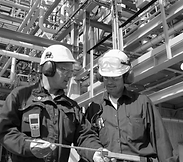Engineering and Technology Quarterly Reviews
ISSN 2622-9374




Published: 13 November 2018
Analysis of Ground Water Quality for Wudil Town Kano State, Nigeria
A. Saminu, RL. Batagarawa, IA. Chukwujama, A. Dadan Garba
Nigerian Defence Academy, Nigeria

Download Full-Text Pdf
10.31014/aior.1995.01.01.2
Abstract
The need for potable water is necessary for the well-being of any community. The study was conducted to evaluate the groundwater quality of Wudil town Kano state (Nigeria). Groundwater samples were collected from 4 boreholes (wells) from high and low densely populated areas and analyzed for 10 water quality parameters, based on the analysis conducted it was observed that almost 70% of the parameters analyzed exceeded the prescribed limit for both WHO and NSDWQ standards for the case of the samples collected from densely populated areas, while the results of the samples for the low densely populated areas were found to be in conformity with the two standards. 25% were found to be within the two standards standard for the samples from both areas, while the remaining 5% were below the standards for the two areas respectively.
References
-
Howari F.M., Abu-Rukah Y. and Shinaq R. (2005) "Hydrochemical analysis and evaluation of groundwater resources of north Jordan," Water Resources, Vol32 (5) pp 555-564.
-
Ikem, A.; Osibanjo, O.; Sridhar, M. K. C.; Sobande,(2002) A.: Evaluation of groundwater quality characteristics near two waste sites in Ibadan and Lagos, Nigeria.Water, Air, and Soil Pollution, Vol.140(1-
-
Jayaraman,P.R.,GangaDevi,T.,&VasudenaNayar(2003)T.“Waterquality studies on Karamana River, ThiruvananthapuramDistrictSouth Kerela,India."pollutionresearch,Vol.22(I),pp89–100.
-
KhanT.A (2011)TraceElementsintheDrinkingWaterand theirpossibleHealthEffectinAligarhCity,India".Journalof Water Resource andProtection,Vol.3, pp522-530.
-
Mohapatra, U. K., & Singh, B. C.(1999) Trace metals in drinking water from different sources in old capital city of Cuttak”. Indian Journal of Environmental Health, Vol. 41(2), pp115–120.
-
Mohrir A. Ramteke D.S., Moghe C.A., Wate S.R., and Sarin R.(2002) Surface and Groundwater Quality Assessment in Binaregion", IJEP.Vol.22(9)
-
Niquette, P., Servais, R.(2001) Bacterial Dynamics in the drinking water distribution system of Brussels," Water Research, Vol. 35( 3)pp 675-682.
-
OlofinEA(1987).Someaspectofphysicalgeographyof theKanoregion, andrelated humanresponses Departmental lectureseries 1:pp.50.Department of Geography, BayeroUniversityKano, Nigeria
-
Rao, Mushini VenkataSubba, Vaddi Dhille swaraRao and Betha pudi Samuel Anand Andrews (2012) “Assessment of Quality of Drinking Water at Srikurmam in Srikakulam District,’Andhra Pradesh, India,” International Research Journal of Environmental Science, Vol. 1(2), pp13-20.
-
Sinha, D. K., Saxena, S., and Saxena, (2004) R. "Water quality index for Ramganga river water at Moradabad," Pollution Research, vol. 23( 3) pp527-31.
-
Welch, P.S (1952) Limnological Methods, NewYork.
-
WHO (2011) World health organization.Guideline for Drinking water quality 4thed Gevena, Switzerland.



